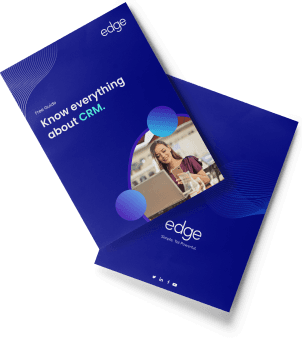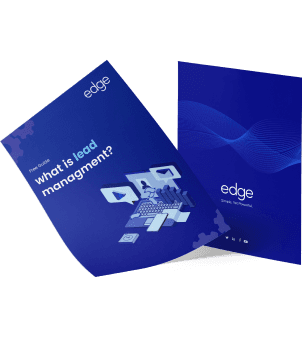The world, technologies, businesses, communication, people psychology—everything is changing at a rapid pace. And sales pitches are no exception.
Sales pitches today are quick and direct. Salespersons have no more than 30 seconds to bring in their customers. They have to choose every word and line very, very carefully to connect, convince, and provide value to an unknown person.
But what truly makes a sales pitch engaging?
It’s not just about listing features or reciting a well-rehearsed script; it’s about making a real connection, understanding what your audience needs, and sharing a message that truly speaks to them. Read on to learn more!
Know Your Customer First
A great sales pitch shows how your product solves a specific problem.
Therefore, always start with knowing what the pain points and challenges of your customers are and how your product can be a solution to their issues.
Before you start pitching your product, try to think of the following questions:
What’s the biggest challenge your customers face in this area?
How have previous solutions fallen short for them?
How do they currently handle this process?
What are their biggest priorities this year?
How do they feel about the discussed challenges?
What would an ideal solution look like for them?
And more
If possible, use quick polls and/or brief quizzes to learn about your customers. This makes the experience more engaging and allows you to better tailor the pitch on the spot.
When you consider the aforementioned questions, you can customize and create a pitch that makes them feel that they are part of a dialogue rather than a lecture.
This way, they better engage with the pitch, which increases the chances of bringing a sale.
However, make sure you consider both practical and emotional needs.
For example, if you’re selling productivity software, think of if they’re unhappy by wasted time or stressed due to a lot of pending tasks.
Start with a Compelling Story
Stories are powerful because they help make your pitch memorable and relatable. Use them to make your company feel more personal with the “human” side of your brand.
Instead of listing out features, describe a scenario where your product made a real difference. To keep the story even more effective, make it specific and relevant to your audience.
Following this structure for your pitch story:
Briefly outline a challenge your customer faced.
Describe how your product provided a solution.
Share the positive impact it had on the customer’s life or business.
Here is the catch: keep your story concise but detailed enough to connect emotionally. Avoid vague statements, as specifics make stories more believable and impactful.
Use Personalized Pitch for Every Customer
Like no standard suit is perfect for everyone, a single pitch doesn't resonate with all customers. Therefore, it is necessary to personalize your pitch to resolve the specific problem of each customer segment and introduce the solution.
These are the steps involved in personalizing the pitch:
Do customer research
Customize the pitch
We have already discussed doing customer research in the first strategy.
All you have to do is to think of some questions to find out customers’ problems, paint points, previous solutions they used, etc. (see strategy #1 to learn more)
Once you complete the customer research, include relevant case studies, examples, testimonials, and/or scenarios in your pitch to align with their unique needs.
DO NOT forget to change your pitch tone as well as per the targeted audience.
For example, if the customers are young, go for casual, humor-based sales pitches. On the other hand, the formal professional tone is more engaging for customers in their 40s.
In case you find it difficult to write pitches in different tones and styles, the AI-based Editpad Paraphrasing Tool can rephrase them in seconds. You do not need to find formal alternatives of casual terminologies (and vice versa), which make your life easier.
TIP: Once you create a personalized pitch, end with a call-to-action that’s specific to them.
Use Emotions to Capture Attention
In sales, it's common to hear, “People buy based on emotion then justify after the fact with logic.” You must have experienced it if you have been in sales.
Therefore, it is important to appeal to the emotional side of your audience. Emotions like excitement, relief, or even empathy can make your product pitch stand out.
Think about how you want your audience to feel. It can be
a sense of relief that a complex problem is now solved,
excitement about new possibilities, or
trust in a product that’s proven effective.
The best way to bring emotions into the pitch is to use language (the right words) in the right way in order to resonate emotionally.
Here are the emotions you can bring into the pitch with examples:
Keep It Short and Focused
Attention spans are limited, so avoid lengthy, detail-heavy pitches.
Therefore, aim to deliver your main points within a few sentences and minutes. This shows that you respect your audience’s time.
The secret to a concise pitch lies in proper structuring. Do the following:
Highlight 3 key benefits that are the most compelling reasons to buy.
Skip complex/technical details for follow-up emails.
Use phrases like, “In short…” or “The key point here is…” to get to the main message quickly. Once you’ve established interest, you can dive deeper if the customer wants to know more.
Embed Engaging Visuals and Demonstrations
If you will deliver your sales pitch at an event or a meeting, you should definitely add visual elements to it to increase its effectiveness and engagement.
Visuals break up verbal information, and a live demonstration helps potential clients visualize your product in action. Remember, it is way more persuasive to show your audience the benefits of your products rather than telling them
So, prepare an interactive slide deck with before-and-after visuals, infographics, and video snippets. If you’re pitching software, offer a live demo and walk through core features that are relevant to your prospect’s needs.
Remember to keep visuals simple, with high-quality graphics that reflect your brand’s professionalism.
Conclusion
Want to make your sales pitch more engaging? The secret is to understand your customer’s needs and create a personalized message that resonates emotionally.
For this, research customers’ challenges and priorities at the first spot to tailor your pitch to them. Use storytelling to highlight how your product has helped others in similar situations to make your pitch relatable and memorable.
Bring in emotional language to capture their attention, keep your pitch short, and emphasize key benefits. You should also add visuals and demonstrations to help customers visualize the product’s value.













